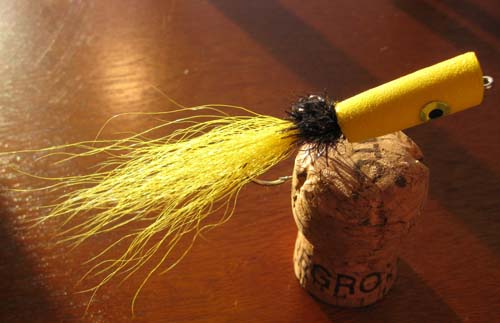When I found myself watching curling on television a couple of weeks ago, I realized it must be that time of year. Too late for most hunting and too early for most fishing, it was the Purgatory of the Sporting Life, also known as February. Chaucer said April is the cruelest of months, but if you are a sportsman or sportswoman, smart money is on February. A garage can only stand so much reorganizing, and rather than mindlessly typing pages full of, “All work and no play makes Jack a dull boy,” I thought I’d explore some slightly less psychotic things we can do to pass the time.
Some while ago, I attended a fly tying class at our local Bass Pro Shops. There was no charge for the class, and the store provided the materials. We met in the White River Fly Shop, and our instructor Lewis introduced the tools we would use, namely a simple vise, bobbins of thread, and small scissors. That’s it. Fly tying has always seemed like some sort of arcane black magic to me, so I’ll admit I was skeptical anyone, much less me, could produce anything with these implements that would cause a fish to do more than sneer. The bits of fur and feathers strewn about the tying table did nothing to bolster my confidence. In short order, while he was talking to us in fact, Lewis whipped up a jig. I know it was only dyed bucktail, Mylar, and string because he allowed me to select the materials. The knowledge that only seconds before I had handed the man a pile of deer hair made the result all the more impressive to me online viagra uk.
Lewis said a set of basic techniques would allow us to produce anything from a simple jig to the most elaborate fly patterns. Gluing a foam body and eyes to a hook, tying in some bucktail as he had done for the jig, and palmering (think winding) a short section of material onto a hook would yield a pencil-popper.
Finally the time came for the other tyros and me to pick up the tools. Lewis explained we would be tying a pattern called a Blonde that incorporates several fundamental techniques and as a bonus would catch fish like crazy. Blondes were popular in the ’50s and ’60s, he explained, but we probably wouldn’t find them for sale in any modern catalogs. This is not because they’re any less effective now, but because the pattern is so simple they can’t be sold at a sufficient profit. He tied one using the same bucktail as we all followed along tying our own creations. One fellow chose some reddish bucktail, and Lewis explained that the resulting fly would be a Strawberry Blonde. Another man tied a Honey Blonde with some yellow and brownish bucktail together. My all-white creation would, of course, be a Platinum Blonde.
I think it’s gorgeous, but I haven’t been brave enough to fish with it. I’ll have to break out the vise and whip up some more so I can afford to sacrifice a few to the murderous Spanish mackerel later this year.




2 responses so far ↓
1 Theresa // Mar 11, 2010 at 1:58 pm
Ah, so that’s what you do with all that spare time you have. Looks really good to me for a first time try.
2 armchairoutfitter // Mar 11, 2010 at 3:17 pm
Thanks. All work and no play . . .
Leave a Comment